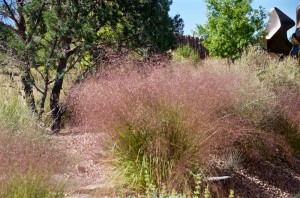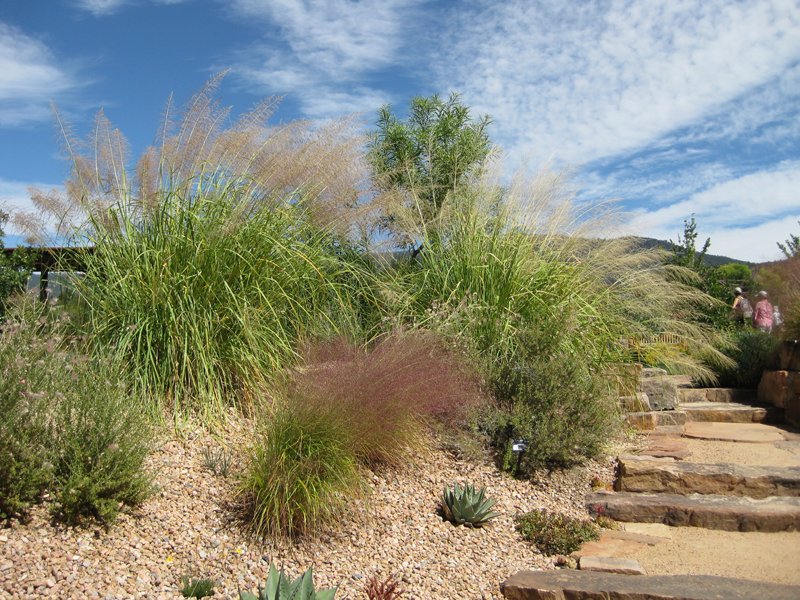Scientific name: Eragrostis trichodes
 Common name: sand lovegrass
Common name: sand lovegrass
Plant family: Poaceae
Article by Susan Bruneni
Visitors to Santa Fe Botanical Garden at Museum Hill this time of year are treated to the airy purplish flowers and slender delicate foliage of the sand lovegrass. But this beautiful ornamental perennial bunchgrass is also a hard-working participant in the USDA’s Natural Resources Conservation Services program. It’s ability to grow quickly with a minimum of moisture on sandy, eroded terrain has made it a star in the field of erosion prevention. This quality works just as well on residential property as it does on rangeland. Sand lovegrass is a North American native, inhabiting sandy prairies in the Central and Southern Great Plains (including northeastern New Mexico). It has a narrow, flat leaf blade which rolls inward during dry periods, creating a threadlike appearance. The purplish flower panicle has spikelets of four to six small flowers. It remains green through the fall. Mature plants then turn bronze and are visually striking into the winter. As an ornamental, they may be planted as an accent piece or in striking groups.
Seeds and plants are available locally and through seed companies. The Natural Resources Conservation Service (NRCS) division of the USDA recommends sand lovegrass for re-seeding rangeland and includes it in range-seeding mixtures for quick cover and forage production. It’s shallow, wide-spreading root system secures the soil and its early spring seedling emergence (typically two weeks earlier than other warm season grasses) allows for rapid establishment and protection. It is highly preferred by livestock and is sometimes referred to as “ice cream grass” because of its palatability. It also cures well on the stem and provides good grazing in fall and winter for lifestock and wildlife.
References: Missouri Botanical Garden
plants.usda.gov nrcs.usda.gov



